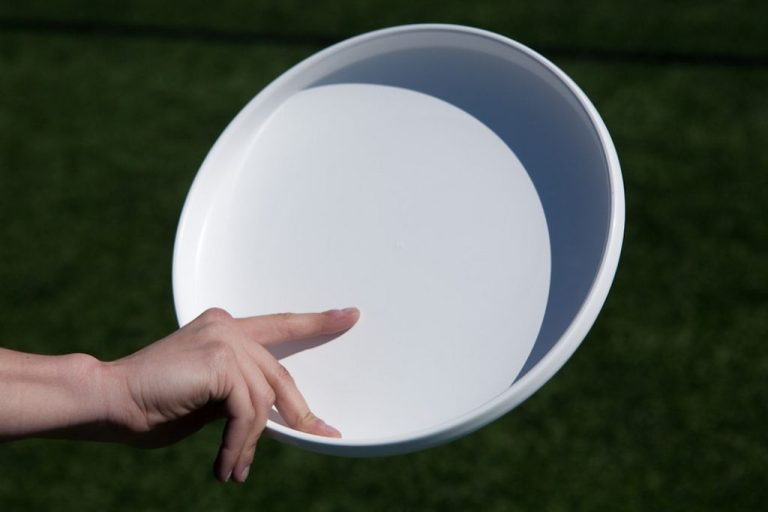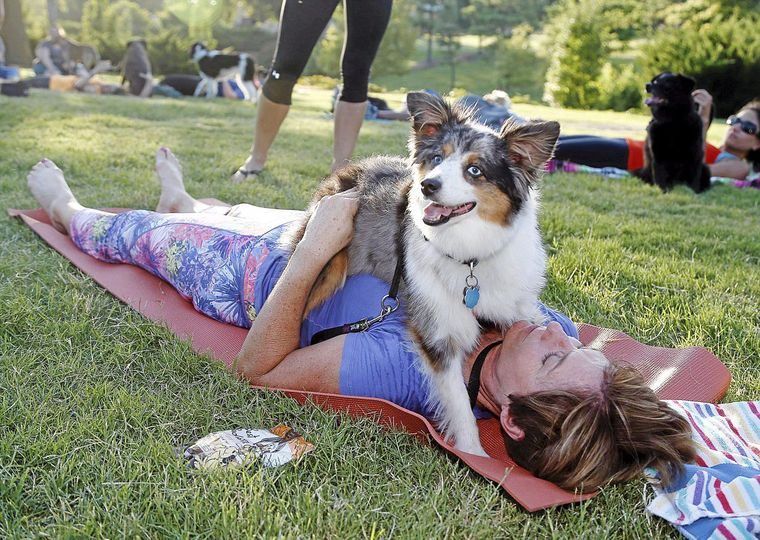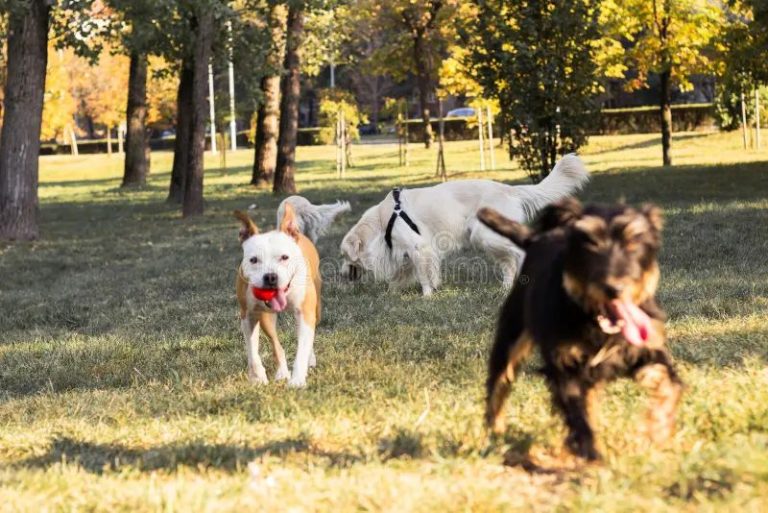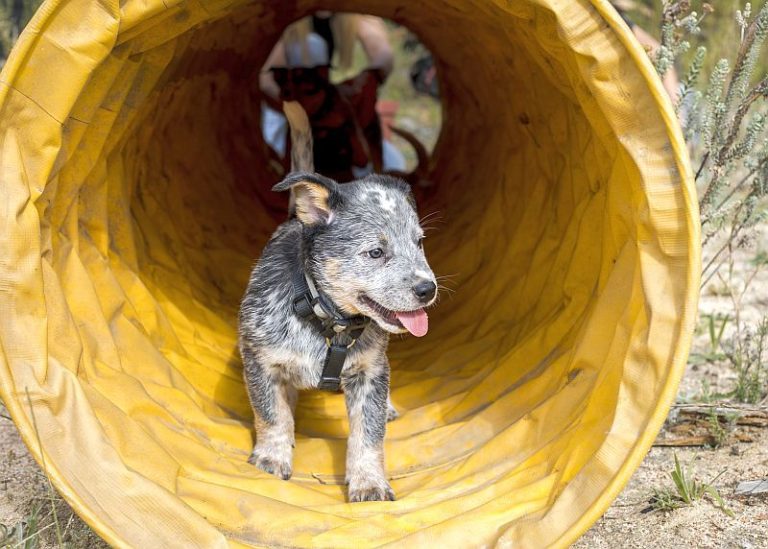Doggie Soccer: Kick It With Your Pup
Doggie soccer is a fun sport that owners can play with their dogs to provide both physical and mental stimulation. It involves dogs running and maneuvering a soccer ball into a goal on a mini soccer field. Doggie soccer has steadily grown in popularity as a great way for dogs to get exercise, bond with their owners, and use their natural herding and play instincts.
The game is adapted from regular soccer to be safe and enjoyable for dogs of all breeds and sizes. While the dogs do the running and ball handling, owners can participate by motivating their dogs, directing them or acting as goalies. It provides an interactive way for owners to play and connect with their four-legged friends.
Doggie soccer leagues, tournaments and meetup groups are popping up across the country as more pet owners discover this rewarding sport. Both dogs and owners can reap the benefits of improved cardio, agility training, socialization and good old-fashioned fun. If you’re looking for a new hobby to enjoy with your pup, doggie soccer delivers excitement for all.
What is Doggie Soccer?
Doggie soccer is a fun sport where dogs play soccer against each other or with their human owners. It’s a great way to exercise and bond with your furry friend!
The game is played on a small field, usually about 30 feet by 15 feet. Teams consist of 1-2 dogs and 0-2 humans. The ball is larger and lighter than a regulation soccer ball to accommodate the dogs. According to the Northern Virginia Dog Sports Association, a common ball is a round or donut-shaped flexible plastic “Jolly Ball” 10-14 inches in diameter (https://www.nvdsa.com/rules–policies.html).
Scoring is similar to regular soccer, with goals scored when the ball fully crosses the end line between the goal posts. Some competitions award 1 point per goal, while others follow a 3 point system with goals directly scored by dogs worth 3 points and all other goals worth 1 point. The game consists of two 5-10 minute halves with a short halftime break.
Teams can be coed with any mix of dogs and humans. Humans cannot use their hands or feet to control the ball. Dogs must show sportsmanship and not aggressively tackle other players. Basic soccer rules apply, with some modifications for dogs as needed (https://www.facebook.com/theifab/posts/questions-answers-dog-prevents-a-goal-a-dog-enters-the-field-of-play-during-the-/1604037206431093/).
Benefits of Playing
Participating in doggie soccer provides many benefits for both dogs and their owners. For dogs, soccer is great exercise that allows them to burn energy and strengthen muscles. The variety of running and maneuvering works different muscle groups. According to the HappyDogInstitute.com, “Dog sports involve cross-species collaboration and therefore boost communication skills on both sides.” The training and gameplay foster bonding and improve the relationship between a dog and their owner. Mentally, soccer provides stimulation as dogs must focus, learn rules, solve problems and make decisions on the field. The Health Benefits of Dog Sports article notes that the mental work “staves off boredom and prevents anxiety issues from developing.” Socially, the game allows dogs to interact with other canines and people, improving social skills. Overall, doggie soccer is an enriching activity with myriad physical, mental and social benefits for canines.
Getting Started
To get started with doggie soccer, you’ll first need to gather the proper equipment. The most important piece is the ball. Opt for a soft, lightweight ball that your dog can pick up and carry easily in their mouth. Soccer balls designed specifically for dogs are available at most pet supply stores (http://www.clickertraining.com/node/1873). You’ll also want a good pair of shoes for yourself that provide traction on grass or turf. Your dog will play barefoot.
Find an open grassy area to designate as your playing field, like a backyard, park or school field. Make sure it’s a safe space free of debris. Look for local dog parks that have space to kick around a ball. You can also connect with other dog owners interested in the sport by searching online dog forums or meetup groups to find or form a casual doggie soccer league in your area.
More formal dog agility competitions like the Purina Incredible Dog Challenge have doggie soccer events you can enter once your pup has learned the sport. Check their website for upcoming events and rules (https://wagwalking.com/activity/activities-for-soccer-players-with-dogs).
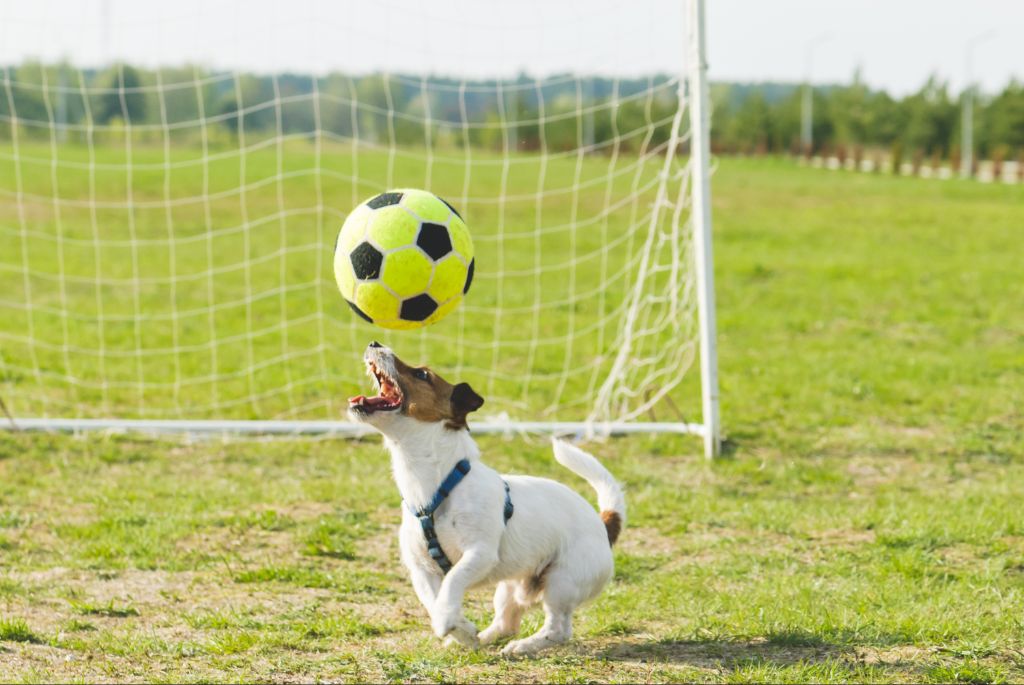
Training Your Dog
Like any sport, doggie soccer requires some basic training and skills development before your pup is ready to play in a real match. Start by teaching basic obedience commands like “sit,” “stay,” and “come.” Your dog needs to have these mastered to follow directions on the field during gameplay. Teach “drop it” so your dog will release the ball on cue
Next, work on dribbling skills by rolling or bouncing balls for your dog to chase and return. Use praise and treats to reinforce when they pass the ball back to you. You can build up distance and use cones or goals to practice shooting. Get your dog comfortable dribbling the ball back and forth between their paws or nose before progressing to advanced moves like headers. This takes patience and repetition, but it helps develops key soccer skills.
When your dog has the basics down, you can start training them in specific positions. Strikers should practice shooting at the goal. Defenders work on stealing the ball away or blocking shots. Midfielders focus on passing drills and transition play. Always use positive reinforcement throughout training. Proper technique and footwork may take months, but the payoff is an awesome doggie teammate for backyard soccer games.
Game Strategies
When playing doggie soccer, it’s important to develop strategies for both offense and defense. On offense, you’ll want to work on dribbling skills with your dog, teaching them to use their nose or paws to move the ball up the field. Practice passing the ball back and forth, rewarding successful passes with treats. Teach your dog to “cross” the ball by kicking it across the goal mouth to set up scoring opportunities. On defense, train your dog to stay goal-side of the offensive player, blocking their access to the goal. Practice Defensive slides to block passes and shots.
For goalies, work on lateral movement and jumping to make saves. Use treats to lure your dog left and right across the goal line and practice diving saves. Teach your dog to tip or catch gently rolling balls. With practice, your dog will learn when to stay on the goal line versus coming out to cut down shooting angles. Always reward great saves! With the right offensive and defensive tactics, you and your dog will be soccer champions in no time.
For more tips, check out this article on training your dog for soccer: How to Train Your Dog to Play Soccer
Common Rules
Doggie soccer typically follows standard soccer rules with some modifications. Each team should have no more than 5-7 dogs playing at once. The ball used is often larger, around the size of a volleyball, to accommodate carrying it in the mouth. As in regular soccer, no hands/paws can touch the ball except for the goalie dog in the penalty area.
Common penalties in doggie soccer include delay of game if the dog holds the ball too long without moving. Standard soccer fouls apply as well – no tripping, pushing, or aggressive behavior. If a dog is too rough, the referee can give a warning or eject them from the game.
The offside rule is different in doggie soccer. Players cannot be offside since the dogs don’t always understand staying behind the defender. Goals can be scored from anywhere on the field. Other standard soccer rules for substitutions, penalty shots, injuries and overtime apply in doggie soccer.
Overall the rules aim to keep games fun and safe for the dogs. Penalties are given if needed but the priority is letting the dogs play in a natural way.
Safety Tips
When playing doggie soccer, it’s important to take precautions to avoid injuries and keep your pup safe. Here are some tips:
Avoid injuries
– Don’t play on hard or slippery surfaces that could cause strains or sprains. Grass or artificial turf is best.
– Make sure your dog is warmed up before playing to prevent muscle injuries.
– Allow proper rest and water breaks to prevent overexertion.
– Keep an eye out for aggressive play that could lead to bites or scratches.
– Trim your dog’s nails to avoid scratches if they jump up.
Monitor play
– Watch your dog closely for signs of fatigue or limping/discomfort.
– End the game if your dog seems distressed or reluctant to play.
– Be aware of hazards like lawn chemicals, bees, broken glass, etc.
Use proper equipment
– Opt for a soft, rubber soccer ball that won’t hurt your dog if kicked or chewed.
– Don’t use a real soccer ball which is too hard.
– Make sure your dog’s collar is snug but not constricting.
Competitions
Dog soccer competitions are held across the United States for dogs of all skill levels. Popular regional tournaments include the Midwest Canine Championship held annually in Chicago and the West Coast Open hosted in Los Angeles. For beginners, local pet stores and shelters often organize low-key games and small tournaments as fundraisers. As your dog’s skills progress, you can enter weekend competitions hosted by training facilities to compete against other amateur teams.
The highest level of competitive doggie soccer is the Pro League, where expertly trained dogs face off in a tournament-style competition each year. Winning teams have the chance to compete internationally against dog soccer clubs from Europe and Asia. Before entering the Pro League, it’s recommended that dogs have at least 2 years of competitive experience and training. Scouting combines are held regionally for prospective Pro League dogs to showcase their abilities.
Check the schedules on sites like Soccer Collies to find upcoming local dog soccer competitions in your area. With regular practice, your dog can develop the skills needed to compete and have fun playing soccer against other pups!
Getting Involved
If you and your dog love soccer, there are many ways to get involved with doggie soccer beyond just playing in your backyard. Here are some ideas for taking your dog’s soccer skills to the next level and connecting with other soccer dog enthusiasts in your community:
Starting a League
If there isn’t already a recreational doggie soccer league in your area, consider starting one! According to SoccerCollies, the goal is to have a three dog soccer team in every city for performances and games. Starting a recreational league allows dogs and owners to play organized games and matches. Handle registration, schedule games, secure a field, and find volunteer referees to get a league up and running.
Volunteering
Offer to volunteer with local dog soccer teams or leagues, whether it’s helping as a referee, field monitor, registration coordinator, or providing snacks and water. Volunteering is a great way to get involved in the doggie soccer community. Check for opportunities with groups like SoccerCollies or ask your local pet stores if they sponsor any dog soccer events.
Spectating
Attending dog soccer games and tournaments as a spectator is an exciting way to spend a weekend afternoon. Not only is it fun to cheer on the pups, but you can also meet other dog lovers and soccer fans. Look for upcoming dog soccer events in your area and invite friends or family to watch with you. According to WagWalking, it’s a great bonding activity for soccer fans and their dogs.

